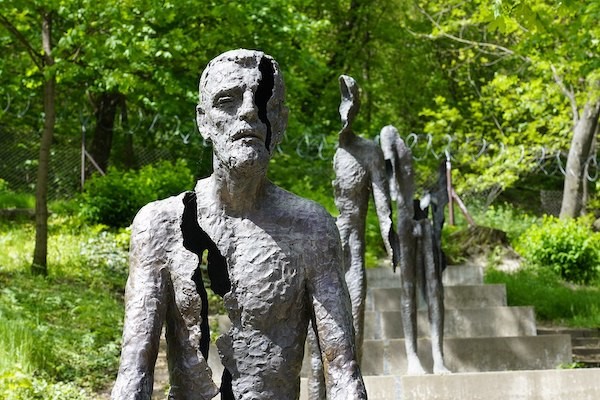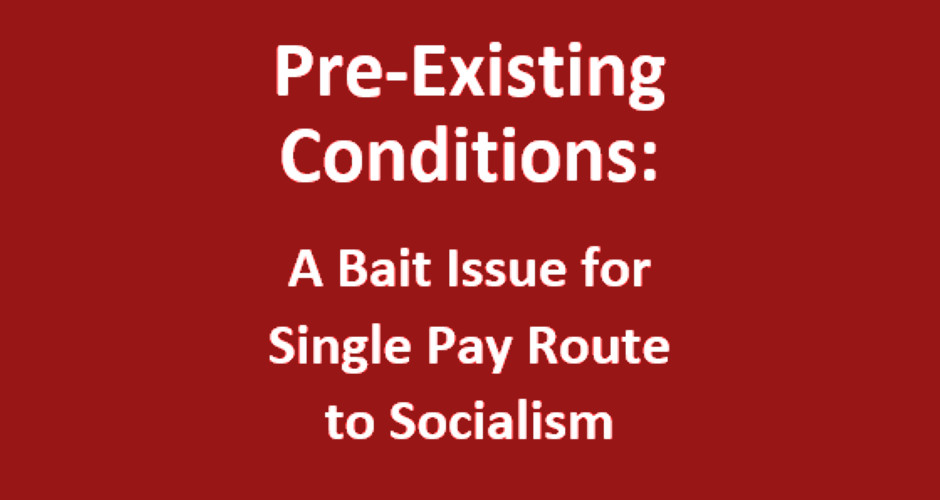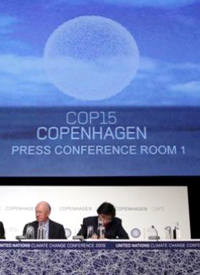 The American Left dreams of importing the Nordic social system — but how accurate is their caricature?
The American Left dreams of importing the Nordic social system — but how accurate is their caricature?
Although Bernie Sanders failed to win the Democratic presidential nomination, the Vermont senator’s campaign did succeed in mobilizing thousands of progressive activists. Their energy and support seems closely connected to Sanders’s quest to introduce a Nordic-style welfare model in the United States. As Sanders explained at the very first Democratic debate last October, “I think we should look to countries like Denmark, like Sweden and Norway, and learn from what they have accomplished for their working people.”
But it’s evident that the left wing of the Democratic party would also push for these ideas under a future Hillary Clinton administration. Indeed, Ezra Klein, the editor of the liberal news website Vox, wrote last fall that “Clinton and Sanders both want to make America look a lot more like Denmark — they both want to pass generous parental leave policies, let the government bargain down drug prices, and strengthen the social safety net.”
The current president and the last Democratic president share this vision, too. In his book Back to Work (2011), Bill Clinton argues that Finland, Sweden, and Norway offer greater opportunities for individuals to climb the social ladder than the U.S. does. Barack Obama recently gathered the leaders of the Nordic countries in Washington, explaining that “in a world of growing economic disparities, Nordic countries have some of the least income inequality in the world — which may explain one of the reasons that they’re some of the happiest people in the world.”
It is not difficult to grasp the American Left’s admiration for Nordic-style democratic socialism. These countries combine relatively high living standards with low poverty, long life spans, and narrow income distributions — everything the Left would like America to have. There is, however, a simple fact that seems to have escaped those who idealize Nordic-style social democracy. As I show in my forthcoming book Debunking Utopia: Exposing the Myth of Nordic Socialism, the social success of Nordic countries pre-dates progressive welfare-state policies.
The social success of Nordic countries pre-dates progressive welfare-state policies.
A common misconception is that the Nordic countries became socially and economically successful by introducing universal welfare states funded by high taxes. In fact, their economic and social success had already materialized during a period when these countries combined a small public sector with free-market policies. The welfare state was introduced afterward. That the Nordic countries are so successful is due to an exceptional culture that emphasizes social cohesion, hard work, and individual responsibility.
Today, in contrast, Nordic countries stand out as having high-tax models. Denmark, for example, has the highest tax rate among developed nations. But in 1960, the tax rate in the country was merely 25 percent of GDP, lower than the 27 percent rate in the U.S. at the time. In Sweden, the rate was 29 percent, only slightly higher than in the U.S. In fact, much of Nordic prosperity evolved between the time that a capitalist model was introduced in this part of the world during the late 19th century and the mid 20th century – during the free-market era.What might come as a surprise to American admirers of the Nordic countries is that high levels of income equality evolved during the same period. Swedish economists Jesper Roine and Daniel Waldenström, for example, explain that “most of the decrease [in income inequality in Sweden] takes place before the expansion of the welfare state and by 1950 Swedish top income shares were already lower than in other countries.” A recent paper by economists Anthony Barnes Atkinson and Jakob Egholt Søgaard reaches a similar conclusion for Denmark and Norway. Cultural norms and mores are hugely important in a country’s development — the Scandinavian countries are a prime example. In modern management literature, people from the Nordic countries are described as honest and hard-working. Attitude studies show that they have unusually high levels of societal trust. Historic sources tell us that these attributes were already evident among the Nordic people centuries ago. While some scholars attribute this to the Protestant work ethic, it is likely that climate played an equally important role in creating the Nordic success culture. Nordic farmers owned their land but struggled to survive in the unforgiving climate of Scandinavia. In order to thrive, these homogenous societies developed strict work ethics, healthy lifestyles, and a code of individual responsibility out of necessity. To paraphrase the ancient Persian king Cyrus the Great, hard lands breed hard people.
American admirers of Nordic-style social democracy argue that by copying social-democratic policies, the U.S. will copy Nordic social success. But is this true?
Hard lands breed hard people.
In 1960, well before large welfare states had been created in Nordic countries, Swedes lived 3.2 years longer than Americans, while Norwegians lived 3.8 years longer and Danes 2.4 years longer. Today, after the Nordic countries have introduced universal health care, the difference has shrunk to 2.9 years in Sweden, 2.6 years in Norway, and 1.5 years in Denmark. The differences in life span have actually shrunk as Nordic countries moved from a small public sector to a democratic-socialist model with universal health coverage. Moreover, the longest average life spans among Nordic peoples are found in Iceland — the small Nordic cousin that has the most distinctly Nordic culture, but also the most limited welfare system.
It is equally interesting to look at Nordic Americans, a group that combines the Nordic success culture with U.S.-style capitalism. It was mainly the impoverished people in the Nordic countries who sailed across the Atlantic to found new lives. And yet, as I write in my book, Danish Americans today have fully 55 percent higher living standard than Danes. Similarly, Swedish Americans have a 53 percent higher living standard than Swedes. The gap is even greater, 59 percent, between Finnish Americans and Finns. Even though Norwegian Americans lack the oil wealth of Norway, they have a 3 percent higher living standard than their cousins overseas.
Perhaps even more astonishing is that Nordic Americans are more socially successful than their cousins in Scandinavia. They have much lower high-school-dropout rates, much lower unemployment rates, and even slightly lower poverty rates. Similarly, immigrants to the Nordic countries fare worse than those to the U.S. with regard to employment, self-reported health, and the school results of their children.
In short: What the American Left admires about the Nordic countries clearly has less to do with their social-democratic welfare states than with the exceptional culture in these historically Protestant societies. Currently, Nordic-style democratic socialism is all the rage among Democrat activists as well as with liberal intellectuals and journalists. But in the Nordic countries themselves, this ideal has gradually lost its appeal. Only one of the five Nordic countries, Sweden, currently has a government headed by social democrats. The other four countries have center-right governments. Moreover, the Swedish Social Democrats enjoy weaker popular support today than at any point in modern times. They lead a minority government, as the majority of Swedes either support one of the center-right parties or the anti-immigration party.
During the past few decades, the Nordic countries have gradually been reforming their social systems. Taxes have been cut to stimulate work, public benefits have been limited in order to reduce welfare dependency, pension savings have been partially privatized, for-profit forces have been allowed in the welfare sector, and state monopolies have been opened up to the market. In short, the universal-welfare-state model is being liberalized. Even the social-democratic parties themselves realize the need for change.
Curiously, the American admirers of Nordic-style democratic socialism pay no heed to any of these facts. For them, the Nordic countries serve as a Shangri-La, a promised land reachable through generous welfare policies, high taxes, government redistribution, and a massively expanded public sector. Never mind that a closer look shows that these policies are not what explain the success of Nordic societies, and that the Nordic people themselves are becoming less enthusiastic about democratic socialism. Unfortunately, the American Left is more interested in the Nordic myth than a nuanced view of the actual benefits — and drawbacks — of democratic socialism.




























































COMMENTS